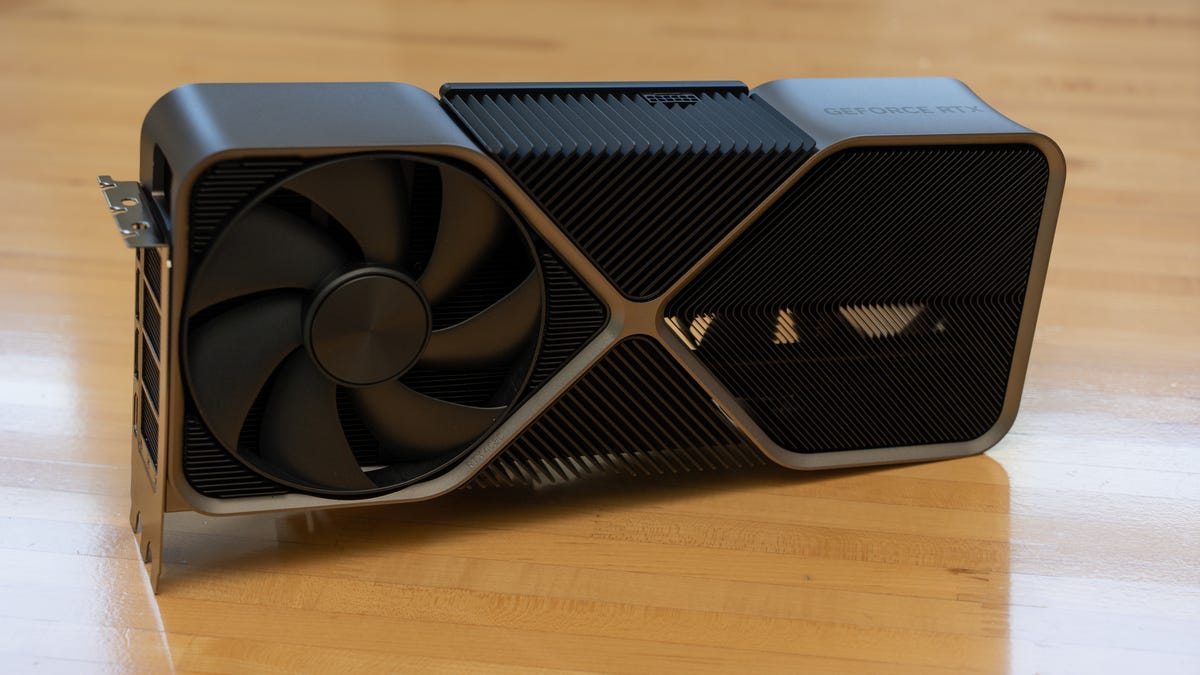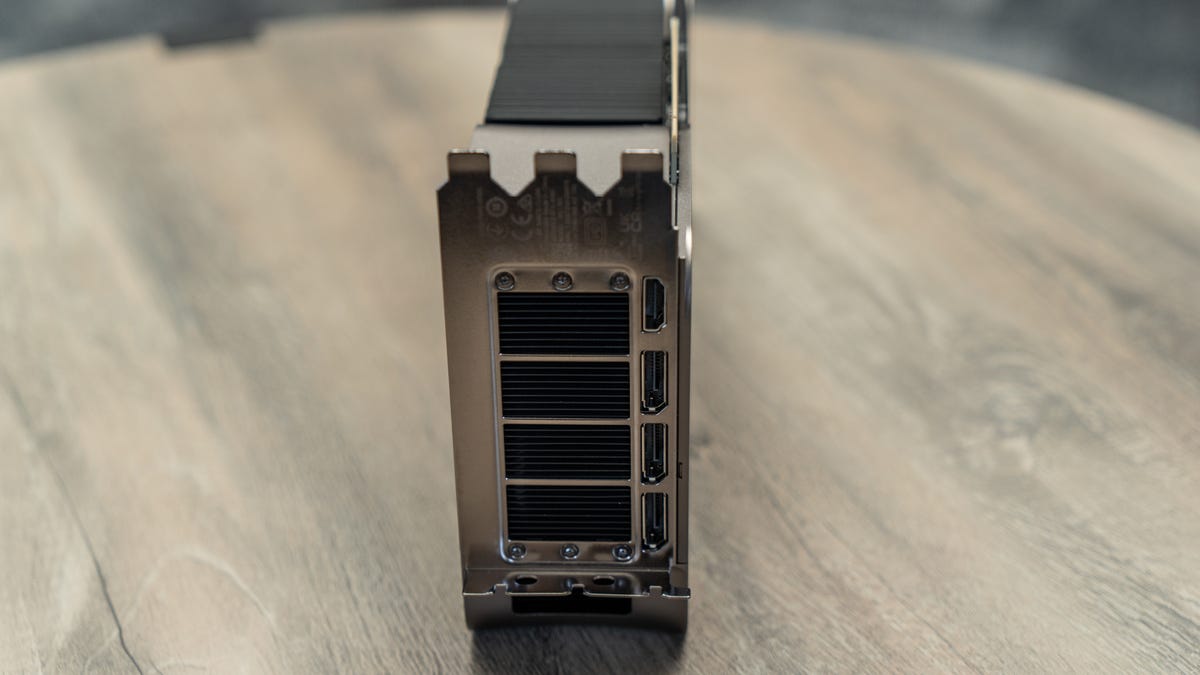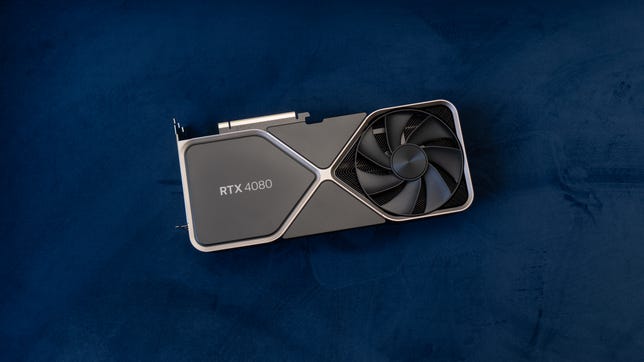Technologies
GeForce RTX 4080 Review: Sufficiently Speedy for Solid 4K
Though $1,200 may not be «on a budget,» for more-than-just-playable 4K it’s a reasonable deal. At least at the moment.

Though the Nvidia GeForce RTX 4090may be the first flagship of the company’s Ada Lovelace-architecture gaming GPU line, the step-down RTX 4080 should attract more potential buyers, if only because its $1,200 price tag is $400 lower than the 4090’s (though that will vary by board manufacturer). And if you want to save money but still get solid 4K gameplay or smoother streaming out of your graphics card, the RTX 4080 is definitely your best bet — for the moment.
A lot depends upon how well AMD’s newest RDNA 3-architecture RX 7900 XTX performs (or the 7900 XT at $899), since it will directly compete with the RTX 4080 at a lower $1,000 figure. We won’t know that until mid-December, though, since that’s when it’s expected to ship. And the rest of the RTX 40-series, from the RTX 4070 down, remains somewhat of a mystery; if the «unlaunched» 12GB model of the RTX 4080 indeed becomes the RTX 4070, I’d place that as a top-end 1440p card or bare-bones 4K.
Like
- Really fast
- Lifts performance of everything, not just games and applications that specifically support the new algorithms
- Relatively quiet
Don’t Like
- Big
- Relatively expensive
- Using the power adapter requires more clearance than you might have
In fact, the RTX 40 series thus far seems to be a notable leap over the 30 series, not just in frame rates but in ray tracing and latency performance improvements, as well as improved performance consistency in general. Enough of a leap that if you’re on the fence about upgrading from a 30 series card, it might tip you into the greener pasture. (Here’s a summary of all the updates the 40 series brings to the line.)
But it might merit waiting if you need to save even more or aren’t quite set up for 4K gaming — you really want a powerful CPU and system with a high-bandwidth (PCIe 4 or later) GPU slot, not just a 4K monitor, or you won’t get as much out of the new GPU as you’d expect. The two 40-series cards I’ve tested are not only faster with significantly lower latency, but they also seem to rely on the CPU far more than the 30 series.
Nvidia GeForce RTX 4080 Founders Edition specs
| Memory | 16GB GDDR6X |
|---|---|
| Memory bandwidth (GBps) | 716.9 |
| Memory clock (GHz) | 11.2 |
| GPU clock (GHz, base/boost) | 2.21/2.51 |
| Memory data rate/Interface | 22Gbps / 256-bit |
| RT cores | 76 |
| CUDA cores | 9,728 |
| Texture mapping units | 304 |
| Streaming multiprocessors | 76 |
| Tensor Cores | 304 |
| Process | 4nm |
| TGP/min PSU | 320W / 750W |
| Max thermal (degrees) | 194F/90C |
| Bus | PCIe 4.0×16 |
| Size | 3 slots; 12.0×5.4 in. (304x137mm) |
| Launch price | $1,200 |
| Ship date | Nov. 15, 2022 |
And if you’re upgrading from an RTX 3080 Ti, you might even need a new case to fit the RTX 4080. The latter is a three-slot card, longer and higher than the former — in fact, it’s the same size as the RTX 4090. Since it’s higher, if you’re using the three-headed power adapter, there needs to be sufficient clearance to keep it from bending too much near the connector. There have been isolated reports of, well, melting.


The RTX 4080 is as fat as the RTX 4090, which is the same size as an Xbox Series S.
Lori Grunin/CNETFor gamers who use DLSS, the card still delivers a lift in DLSS 2 as well as an even better bump with DLSS 3. For games that support the latter, if you run in Performance mode on the RTX 4080 it can deliver the same frame rate as the RTX 4090 in Quality mode, though whether the drop in quality (if there is one) depends upon the game, your visual acuity and how much you care. It’s definitely a tradeoff to consider if you’re on a budget.
Only 10 games with DLSS 3 support are available as of the launch of the RTX 4080:
- A Plague Tale: Requiem
- Bright Memory: Infinite
- Destroy All Humans! 2 — Reprobed
- F.I.S.T.: Forged in Shadow Torch
- F1 22
- Justice
- Loopmancer
- Marvel’s Spider-Man Remastered
- Microsoft Flight Simulator
- Super People
Of course that number will grow over time, but until it does, you still need to think about DLSS 2 performance.
Pending formal encoder testing, I can say that it seems like the AV1 encode/decode bump makes a difference, at least in OBS (one of the few applications that have thus far added support, since it requires the use of a different Nvidia codec) where it handled recording a stream well enough in 4K. But it’s early days, and it can be persnickety about the settings to do so successfully. Not a deal-breaker, but an annoyance. DaVinci supports them, but as yet Adobe Premiere Pro doesn’t seem to. For 3D-based pro graphics applications, at least as measured by SpecViewPerf 2020, there are the usual generational and 4090-over-4080 performance differences.
While the RTX 4080 isn’t as fast as the RTX 4090 with all the stops pulled out, nor would you expect it to be, on a lot of games where the shiny and the detail are more important than speed, the RTX 4080 should do them justice in 4K for less cash. Whether or not it’s the best deal out there for the job may change over the next couple of months, as AMD ships and CES announcements arrive.
Relative performance of recent GPUs
Shadow of the Tomb Raider gaming test (4K)
Note:
Longer bars indicate better performance (FPS)
3DMark Fire Strike Ultra
Note:
Longer bars indicate better performance
SpecViewPerf 2020 SolidWorks (4K)
Note:
Longer bars indicate better performance (FPS)
3DMark Speed Way (DX12 Ultimate)
Note:
Longer bars indicate better performance
3DMark DXR (DirectX Ray Tracing)
Note:
Longer bars indicate better performance (FPS)
3DMark DLSS
Note:
Longer bars indicate better performance (FPS)
Test PC configuration
| Custom PC | Microsoft Windows 11 Pro (22H2); 3.2GHz Intel Core i9-12900K; 32GB DDR5-4800; 2x Corsair MP600 Pro SSD; Corsair HX1200 80 Plus Platinum PSU, MSI MPG Z690 Force Wi-Fi motherboard, Corsair 4000D Airflow midtower case |
|---|
Technologies
The Most Exciting Video Game Rumors and Leaks Ahead of 2026
Technologies
Today’s NYT Mini Crossword Answers for Wednesday, Dec. 17
Here are the answers for The New York Times Mini Crossword for Dec. 17.

Looking for the most recent Mini Crossword answer? Click here for today’s Mini Crossword hints, as well as our daily answers and hints for The New York Times Wordle, Strands, Connections and Connections: Sports Edition puzzles.
Need some help with today’s Mini Crossword? Read on. And if you could use some hints and guidance for daily solving, check out our Mini Crossword tips.
If you’re looking for today’s Wordle, Connections, Connections: Sports Edition and Strands answers, you can visit CNET’s NYT puzzle hints page.
Read more: Tips and Tricks for Solving The New York Times Mini Crossword
Let’s get to those Mini Crossword clues and answers.
Mini across clues and answers
1A clue: Nod (off)
Answer: DOZE
5A clue: Naval submarine in W.W. II
Answer: UBOAT
7A clue: Tricky thing to do on a busy highway
Answer: MERGE
8A clue: Heat-resistant glassware for cooking
Answer: PYREX
9A clue: Put into groups
Answer: SORT
Mini down clues and answers
1D clue: Break up with
Answer: DUMP
2D clue: Falls in line, so to speak
Answer: OBEYS
3D clue: Legendary vigilante who cuts a «Z» with his sword
Answer: ZORRO
4D clue: Rarin’ to go
Answer: EAGER
6D clue: Common reminder for an upcoming appointment
Answer: TEXT
Don’t miss any of our unbiased tech content and lab-based reviews. Add CNET as a preferred Google source.
Technologies
You Can Watch an Exclusive Avatar: Fire and Ash Scene on TikTok Right Now
Disney and TikTok partner on an immersive content hub for James Cameron’s latest movie about the alien Na’vi.
If you’re not quite ready to head to the theater to watch Avatar: Fire and Ash, an exclusive scene preview might sell you on the visual spectacle. As part of a new collaboration with the social media giant, Disney is posting snippets of its new movie to its TikTok account.
This scene isn’t part of any trailer and won’t be posted to other social media accounts, making TikTok the only place you can view it — unless you buy a movie ticket. A first look at the new movie’s scenes isn’t the only Avatar-related bonus on the social media platform right now, either. TikTok has partnered with the house of mouse to bring an entire «immersive content hub» to the app.
A special section of TikTok includes quizzes and educational videos that explore the alien world of Pandora shown off in the movies. On TikTok, you can take a personality quiz to find out what Na’vi clan you most closely align with and unlock a special profile picture border to use on your account.
Science and fiction blend together with a series of videos from real doctors who explain the basis for some of Avatar’s world-building. If you want to learn about exoplanets or how realistic the anatomy of the movie’s alien animals is, these videos will feed your brain while still providing entertainment value.
Perhaps the most enticing part of Disney’s latest social media collaboration is the opportunity for fans to win prizes and trips. TikTok creators who make edits with the #TikTokAvatarContest hashtag are entered into a competition to win Avatar merchandise. The biggest winners will be able to take a trip to visual effects studio Wētā Workshop in New Zealand or visit Avatar director James Cameron’s Lightstorm Entertainment Studio in Los Angeles.
Avatar: Fire and Ash is the third installment in director Cameron’s cinematic passion project. While the first Avatar movie was released in 2009, Cameron didn’t release another entry in the franchise until 2022. In total, there is a five-movie arc planned for the indigo alien Na’vi on the moon of Pandora.
The Avatar movies are known for pushing the boundaries of CGI visual effects in cinema. They are also historically big winners at the box office: the original Avatar is the highest-grossing film of all time, earning $2.9 billion across its theatrical releases. Its sequel, Avatar: The Way of Water, is the third-highest-grossing film of all time, trailing Avengers: Endgame. You can stream those movies on Disney Plus.
It remains to be seen whether Avatar: Fire and Ash will financially live up to its predecessors. The film currently has mixed reviews from critics on Rotten Tomatoes.
-

 Technologies3 года ago
Technologies3 года agoTech Companies Need to Be Held Accountable for Security, Experts Say
-

 Technologies3 года ago
Technologies3 года agoBest Handheld Game Console in 2023
-

 Technologies3 года ago
Technologies3 года agoTighten Up Your VR Game With the Best Head Straps for Quest 2
-

 Technologies4 года ago
Technologies4 года agoBlack Friday 2021: The best deals on TVs, headphones, kitchenware, and more
-

 Technologies4 года ago
Technologies4 года agoVerum, Wickr and Threema: next generation secured messengers
-

 Technologies4 года ago
Technologies4 года agoGoogle to require vaccinations as Silicon Valley rethinks return-to-office policies
-

 Technologies4 года ago
Technologies4 года agoOlivia Harlan Dekker for Verum Messenger
-

 Technologies4 года ago
Technologies4 года agoiPhone 13 event: How to watch Apple’s big announcement tomorrow

